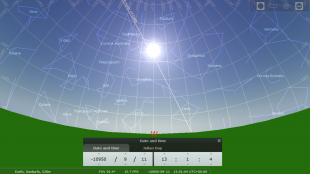Post date:
Evidence from a historic site appears to confirm the date of a comet strike that killed thousands, wiped out many large animal species, and triggered a mini ice age, according to research led by Dr Martin Sweatman of the School of Engineering.
Analysis of symbols carved onto stone pillars at Gȍbekli Tepe in southern Turkey – one of the world’s most important archaeological sites – suggests that a swarm of comet fragments hit Earth around 11,000BC. They ushered in a cold climate that lasted more than 1,000 years.
Engineers studied animal carvings made on a pillar – known as the vulture stone – at the site. By interpreting the animals as astronomical symbols, and using software to match their positions to patterns of stars, researchers dated the event to 10,950BC.
The dating from the carvings agrees well with timing derived from an ice core from Greenland, which pinpoints the event – probably resulting from the break-up of a giant comet in the inner solar system – to 10,890BC.
The carvings appear to have remained important to the people of Gobekli Tepe for millennia, suggesting that the event and cold climate that followed likely had a very serious impact.
Researchers from the University of Edinburgh suggest the images were intended as a record of the cataclysmic event, and that a further carving showing a headless man may indicate human disaster and extensive loss of life.
Furthermore, symbolism on the pillars indicates that the long-term changes in Earth’s rotational axis was recorded at this time using an early form of writing, and that Gȍbekli Tepe was an observatory for meteors and comets.
The find also supports a theory that Earth is likely to experience periods when comet strikes are more likely, owing to Earth’s orbit intersecting orbiting rings of comet fragments in space. The research is published in Mediterranean Archaeology and Archaeometry.



